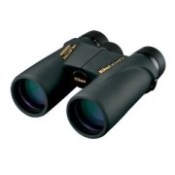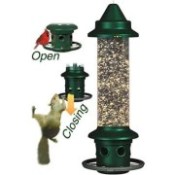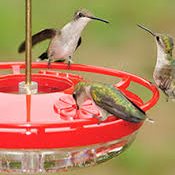
Hummingbird References
Below are a list of hummingbird references, books, journal papers, etc. we have used as sources when writing our hummingbird articles throughout this site.
Attracting Hummingbirds
Day, S., R. Rovansek, and J. Griggs. 2003. The Wildlife Gardener's Guide to
Hummingbirds and Songbirds from the Tropics. New York: HarperCollins Publishers,
Inc.
McKinley, M. 2001. Ortho's All About Attracting Birds. Des Moines, IA: Meredith
Books.
McKinley, M. 2001. Ortho's All About Attracting Hummingbirds and Butterflies.
Des Moines, IA: Meredith Books.
Roth, S. 1998. Attracting Birds to Your Backyard. 536 Ways to Turn Your Yard and
Garden into a Haven for Your Favorite Birds. Emmaus, PA: Rodale Press, Inc.
Flight Biomechanics
Altshuler, D. L., F. G. Stiles, and R. Dudley. 2004. Of hummingbirds and
helicopters: hovering costs, competitive ability, and foraging strategies.
American Naturalist 163:16-25.
Tobalske, B. W., D. L. Altshuler, and D. R. Powers. 2004. Take-off mechanics in
hummingbirds (Trochilidae). Journal of Experimental Biology 207:1345-1352.
Warrick, Douglas R., B. W. Tobalske, and D. R. Powers. 2005. Aerodynamics of the
hovering hummingbird. Nature 435:1095-1097.
Flowers & Pollination
Altshuler, D. L., and C. J. Clark. 2003. Darwin's Hummingbird's. Science
300:588-589.
Bolten, A. B., P. Feinsinger, H. G. Baker, and I. Baker. 1979. On the
calculation of sugar concentration
in flower nectar. Oecologia 41:301–304.
Borgella Jr., R., A. A. Snow, and T. A. Gavin. 2001. Species richness and pollen
loads of hummingbirds using forest fragments in Southern Costa Rica. Biotropica
33:90-109.
Buzato, S., M. Sazima, and I. Sazima. 2000. Hummingbird-pollinated floras at
three Atlantic forest sites. Biotropica 32:824-841.
Canela, M. B. F., and M. Sazima. 2003. Florivory by the crab Armases angustipes
(Grapsidae) influences hummingbird visits to Aechmea pectinata (Bromeliaceae).
Biotropica 35:289-294.
McDade, L. A., and J. A. Weeks. 2004a. Nectar in hummingbird-pollinated plants
I: patters of production and variability in 12 species. Biotropica 36:196-215.
McDade, L. A., and J. A. Weeks. 2004b. Nectar in hummingbird-pollinated plants
I: interactions with flower visitors. Biotropica 36:216-230.
Scobelli, S. A., and P. E. Scott. 2002. Visitors and floral traits of a
hummingbird-adapted cactus (Echinocereus coccineus) show only minor variation
along an elevational gradient. American Midland Naturalist 147:1-15.
Stiles, F. G. 1976. Taste preferences, color preferences, and flower choice in
hummingbirds. Condor 78:10-26.
Temeles, E. J., Y. B. Linhart, M. Masonjones, and H. D. Masonjones. 2002. The
role of flower width in hummingbird bill length-flower length relationships.
Biotropica 34:68-80.
Travers, S. E., E. J. Temeles, and I. Pan. 2003. The relationship between nectar
spur curvature in jewelweed (Impatiens capensis) and pollen removal by
hummingbird pollinators. Candian Journal of Botany 81:164-170.
Foraging Behavior
Altshuler, D. L., and A. M. Nunn. 2001. Observational learning in Hummingbirds.
Auk 118:795-799.
Bouchard, S., M. J. Vonhof, I. M. Brock Fenton, and G. Monette. 2000. Nutrient
preferences of Brazilian hummingbirds. Wilson Bulletin 112:558-562.
Campfield, A. F. 2003. Quality of food source affects female visitation and
display rates of male broad-tailed hummingbirds. Condor 105:603-606.
Wagner, H. O. 1946. Food and feeding habits of Mexican hummingbirds. Wilson
Bulletin 58:69-132.
Wolf, L. L. 1975. "Prostitution" behavior in a tropical hummingbird. Condor
77:140-144.
Identification
Dickinson, M.B., ed. 1999. National Geographic Field Guide to the Birds of North
America, 3rd ed. Washington, D.C: National Geographic Society.
Pyle, P. 1997. Identification Guide to North American Birds. Part 1: Columbidae
to Ploceidae. Bolinas, CA: Slate Creek Press.
Sibley, D.A. 2000. National Audubon Society, The Sibley Guide to Birds. New
York: Alfred A. Knopf.
Metabolic Rate, Daily Energy Expenditure, & Torpor
Bech, C., A. S. Abe, J. F. Steffensen, M. Berger, and J. E. P. W. Bicudo. 1997.
Torpor in three species of Brazilian hummingbirds under semi-natural conditions.
Condor 99:780-788.
Hiebert, S. M. 1991. Seasonal differences in the response of rufous hummingbirds
to food restriction: body mass and the use of torpor. Condor 93:526-537.
Hiebert, S. M., M. Ramenofsky, K. Salvante, J. C. Wingfield, and C. L. Gass.
2000. Noninvasive methods for measuring and manipulating corticosterone in
hummingbirds. General and Comparative Endocrinology 120:235-247.
Hiebert, S. M., K. G. Salvante, M. Ramenofsky, and J. C. Wingfield. 2000.
Corticosterone and nocturnal torpor in the Rufous Hummingbird (Selasphorus rufus).
General and Comparative Endocrinology 120:220-234.
Lasiewski, R. C. 1962. The energetics of migrating hummingbirds. Condor 64:324.
Lasiewski, R. C. 1963. Oxygen consumption of torpid, resting, active, and flying
hummingbirds. Physiological Zoology 36:122-140.
Lasiewski, R. C., and R. J. Lasiewski. 1967. Physiological responses of the
blue-throated and Rivoli's hummingbirds. Auk 84:34-48.
Lotz, C. N., C. Martínez del Rio, and S. W. Nicolson. 2003. Hummingbirds pay a
high cost for a warm drink. Journal of Comparative Physiology B 173:455-462.
Powers, D. R. 1991. Diurnal variation in mass, metabolic rate, and respiratory
quotient in Anna's and Costa's hummingbirds. Physiological Zoology 64:850-870.
Powers, D. R., A. R. Brown, and J. A. Van Hook. 2003. Influence of normal
daytime fat deposition on laboratory measurements of torpor use in territorial
and nonterritorial hummingbirds. Physiological and Biochemical Zoology
76:389-397.
Powers, D. R., and T. M. Conley. 1994. Field metabolic rate and food consumption
of two sympatric hummingbird species in southeastern Arizona. Condor 96:141-150.
Powers, D. R., and T. McKee. 1994. The effect of food availability on time and
energy expenditures of territorial and nonterritorial hummingbirds. Condor
96:1064-1075.
Powers, D. R., and K. A. Nagy. 1988. Field metabolic rate and food consumption
by free-living Anna's hummingbirds (Calypte anna). Physiological Zoology
61:500-506.
Prinzinger, R., K. Krüger, and K.-L. Schuchmann. 1981. Metabolism-weight
relationship in 17 hummingbird species at different temperatures during day and
night. Experientia 37:1307-1309.
Stiles, F. G. 1971. Time, energy, and territoriality of the Anna hummingbird (Calypte
anna). Science 173:818-821.
Migration
Calder, W.A. and E.G. Jones. 1989. Implications of Recapture Data for Migration
of the Rufous Hummingbird (Selasphorus rufus) in the Rocky Mountains. Auk 106:
488-489.
Calder, W.A. 1987. Southbound through Colorado: Migration of Rufous
Hummingbirds. National Geographic Research 3:40-51.
Wethington, S.M., and S.M. Russell. 2002. The season distribution and abundance
of hummingbirds in oak woodland and riparian communities in southeastern
Arizona. Condor 105(3): 484-495.
Natural History
Camfield, A. 2004. "Trochilidae" (On-line), Animal Diversity Web. Accessed
April 7, 2006 at http://animaldiversity.ummz.umich.edu/site/accounts/information/Trochilidae.html.
Hummingbird. (2006, April 09). In Wikipedia, The Free Encyclopedia. Retrieved
April 11, 2006, from http://en.wikipedia.org/wiki/Hummingbird
Johnsgard, P.A. 1983. The hummingbirds of North America. Washington, D.C.:
Smithsonian Inst.
Press.
Powers, D. R. 1996. Magnificent Hummingbird (Eugenes fulgens). No. 221 in The
birds of North America (A. Poole and f. Gill, Eds.). Academy of Natural
Sciences, Philadelphia, and the American Ornithologists' Union, Washington, DC.
Powers, D. R. 1999. Broad-billed Hummingbird (Cynanthus latirostris). No. 430 in
The birds of North America (A. Poole and f. Gill, Eds.). Academy of Natural
Sciences, Philadelphia, and the American Ornithologists' Union, Washington, DC.
Robinson, T. R., R. R. Sargent, and M. B. Sargent. 1996. Ruby-throated
Hummingbird (Archilochus colubris). In The Birds of North America, No. 204 (A.
Poole and F. Gill, eds.). The Academy of Natural Sciences, Philadelphia, PA, and
The American Ornithologists' Union, Washington, D.C.
Sargent, R., M. Sargent. 2001. Hummingbirds. Pp. 357-365 in C. Elphick, J.
Dunning, D. Sibley, eds. The Sibley Guide to Bird Life and Behavior. New York:
Alfred A. Knopf.
Schuchmann, K.S. 1999. Order Apodiformes. Family Trochilidae (Hummingbirds). In:
J.D. Hoyo., A. Elliot, and J. Sargatal, eds. Handbook of the Birds of the World:
Volume 5. Barn-owls to Hummingbirds. Barcelona, Spain: Linx Edicions; 468-535.
Stokes, D.W. and L. Stokes. 1989. A Guide to Bird Behavior, Volume III. Boston:
Little, Brown and Company.
Tyrrell, E.Q. 1985. Hummingbirds. Their Life and Behavior. A Photographic Study
of the North American Species. New York: Crown Publishers, Inc.
Nectar Composition, Osmoregulation, & Feeding Rate
Baker, H. G. 1975. Sugar concentrations in nectars from hummingbird flowers.
Biotropica 7:37-41.
Baker, H. G. 1977. Intraspecific constancy of floral nectar and amino acid
complements. Botanical Gazette 138:183-191.
Bertsch, A. 1983. Nectar production of Epilobium angustifolium L. at different
air humidities; nectar
sugar in individual flowers and the optimal foraging theory. Oecologia 59:40–48.
Beuchat, C. A., W. A. Calder III, and E. J. Braun. 1990. The integration of
osmoregulation and energy balance in hummingbirds. Physiological Zoology
63:1059-1081.
Blem, C. R., L. B. Blem, J. Felix, and J. van Gelder. 2000. Rufous hummingbird
sucrose preference: precision of selection varies with concentration. Condor
102:235-238.
Blem, C. R., L. B. Blem and C. C. Cosgrove. 1997. Field Studies of rufous
hummingbird sucrose preference: does source height affect test results? Journal
of Field Ornithology 68(2):245–252.
Brice, A. T. 1992. The essentiality of nectar and arthropods in the diet of the
Anna's hummingbird (Calypte anna). Comparative Biochemistry and Physiology
101A:151-155.
Brice, A. T., and C. R. Grau. 1989. Hummingbird nutrition: development of a
purified diet for long-term maintenance. Zoo Biology 8:233-237.
Calder, W., L. Calder. 1992. Broad-tailed hummingbird: Selasphorus platycercus. A. Poole, F. Gill, eds. The Birds of North America. Philadelphia: American Ornithologists' Union.
Calder III, W. A., and S. M. Hiebert. 1983. Nectar feeding, diuresis, and
electrolyte replacement of hummingbirds. Physiological Zoology 56:325-334.
Hainesworth, R. 1973. On the tongue of a hummingbird: its role in the rate and
energetics of
feeding. Comp. Biochem. Physiol. 46:65–78.
López-Calleja, M. V., F. Bozinovic, and C. MartÍnez del Rio. 1997. Effect s of
surgar concentration on hummingbird feeding and energy use. Comparative
Biochemistry and Physiology 118A:1291-1299.
McWhorter, T. J. and Martínez del Rio, C. (1999). Food ingestion and water
turnover in hummingbirds: how much dietary water is absorbed? J. Exp. Biol. 202,
2851-2858.
McWhorter, T. J., and C. Martínez del Rio. 1999. Food ingestion and water
turnover in hummingbirds: how much dietary water is absorbed? Journal of
Experimental Biology 202:2851-2858.
McWhorter, T. J., and C. Martínez del Rio. 2000. Does gut function limit
hummingbird food intake? Physiological and Biochemical Zoology 73:313-324.
McWhorter, T. J., C. Martínez del Rio, and B.Pinshow. 2003. Modulated ingested
water absorption by Palestine sunbirds: evidence for adaptive regulation.
Journal of Experimental Biology 206:659-666.
Plowright, R. C. 1981. Corolla depth and nectar concentration: an experimental
analysis of hummingbirds.
Oecologia 94:87–94.
Powers, D. R. 1992. Effect of temperature and humidity on evaporative water loss
in Anna's hummingbird (Calypte anna). Journal of Comparative Physiology B
162:74-84.
Stiles, F. G. 1976. Taste preferences, color preferences, and flower choice in
hummingbirds. Condor 78:10-26.
Nitrogen Requirement
Brice, A. T., and C. R. Grau. 1991. Protein requirements of Costa's hummingbirds
Calypte costa. Physiological Zoology 64:611-626.
McWhorter, T. J., D. R. Powers, and Carlos Martínez del Rio. 2003. Are
hummingbirds facultatively ammonotelic? Nitrogen excretion and requirements as a
function of body size. Physiological and Biochemical Zoology 76:731-743.
Preest, M. R., and C. A. Beuchat. 1997. Ammonia excretion by hummingbirds.
Nature 386:561-562.
Preest, M. R., D. G. Folk, and C. A. Beuchat. 2003. Decomposition of nitrogenous
compounds by intestinal bacteria in hummingbirds. Auk 120:1091-1101.
Nutrient Absorption
Karasov, W. H., D. Phan, J. M. diamond, and F. L. Carpenter. 1986. Food passage
and intestinal nutrient absorption in hummingbirds. Auk 103:453-464.
Schondube, J. E., and C. Martínez del Rio. 2004. Sugar and protein digestion in
flowerpiercers and hummingbirds: a comparative test of adaptive convergence.
Journal of Comparative Physiology B 174:263-273.
Phylogeny
Mayr, G. 2003. Phylogeny of early tertiary swifts and hummingbirds (Aves:
Apodiformes). Auk 120:145-151.
Population/Community Biology
Baguete, M., and N. Schtickzelle. 2003. Local population dynamics are important
to the conservation of metapopulations in highly fragmented landscapes. Journal
of Applied Ecology 40:404-412.
Hilton Jr., B., and M.W. Miller. 2003. Annual survival and recruitment in a
Ruby-throated Hummingbird population, excluding the effect of transient
individuals. Condor 105:54-62.
Wethington, S. M., and S. M. Russell. 2003. The seasonal distribution and
abundance of hummingbirds in oak woodland and riparian communities in
southeastern Arizona. Condor 105:484-495.
Song
Ficken, M. F., K. M. Rusch, S. J. Taylor, and D. R. Powers. 2000. Blue-throated
hummingbird song: a pinnacle of nonoscine vocalizations. Auk 117:120-128.
Ficken, M. F., K. M. Rusch, S. J. Taylor, and D. R. Powers. 2002. Reproductive
behavior and communication in blue-throated hummingbirds. Wilson Bulletin
114:197-209.
Rusch, K. M., K. Thusius, and M. S. Ficken. 2001. The organization of agonistic
vocalizations in ruby-throated hummingbirds with comparison to black-chinned
hummingbirds. Wilson Bulletin 113:425-430.
Territorial Behavior
Hurly, T. A., R. E. D. Scott, and S. D. Healy. 2001. The function of displays of
male rufous hummingbirds. Condor 103:647-651.
Pizo, M. A., and W. R. Silva. 2001. The dawn lek of the swallow-tailed
hummingbird. Wilson Bulletin 113:388-397.
Powers, D. R. 1987. Effects of variation in food quality on the breeding
territoriality of the male Anna's hummingbird. Condor 89:103-111.
Related Hummingibrd Pages:
|
Our Favorite Bird Watching Binoculars, Squirrel-Proof Feeder & Hummingbird Feeder Read Our Reviews: |
||

Nikon Monarch M5
Best mid-priced bird watching binoculars. Waterproof, shockproof, multi-coated ED-Glass. |

|

Best Hummingbird Feeder
Drip-Free, Ant-moat, Durable, Easy to Fill and Clean. |
| Click Images or Links To View More Info | ||